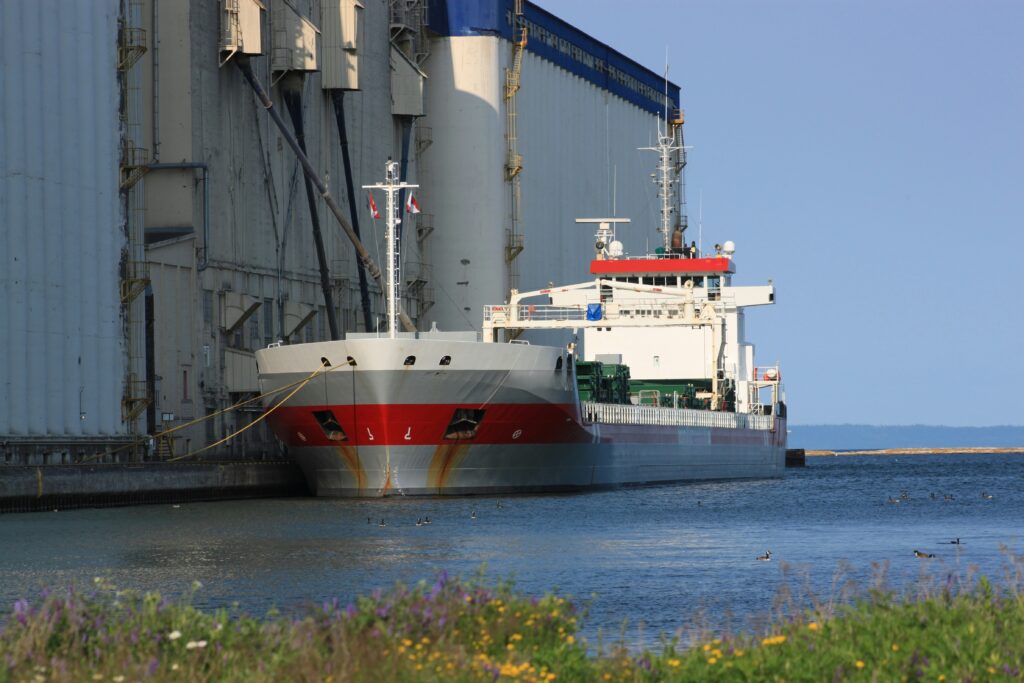As the global shipping industry sets its sights on a low-carbon future, alternative fuels have gained prominence. Among these, ammonia stands out for its zero-carbon combustion and compatibility with existing infrastructure. However, not all ammonia is created equal. The two primary types—green and blue ammonia—present a techno-environmental trade-off that is shaping the maritime fuel landscape. This article explores the distinctions, advantages, limitations, and strategic implications of adopting green versus blue ammonia in the shipping sector.
Why Ammonia?
Ammonia (NH₃) is a nitrogen-hydrogen compound that has emerged as a potential zero-carbon fuel for marine transportation. Unlike traditional fossil fuels, ammonia does not release carbon dioxide (CO₂) during combustion. Furthermore, it has a relatively high energy density compared to hydrogen, is easier to store and transport, and leverages existing infrastructure such as storage tanks and pipelines.
However, ammonia also poses technical challenges, such as toxicity, potential nitrous oxide (N₂O) emissions, and the need for specially designed engines or fuel cells. Nevertheless, with the International Maritime Organization (IMO) aiming for net-zero emissions from international shipping by or around 2050, ammonia is a top contender for the sector’s decarbonization.
What is Green Ammonia?
Green ammonia is produced using renewable energy sources such as wind, solar, or hydropower. The process involves electrolysis to split water into hydrogen and oxygen, followed by the Haber-Bosch process to combine hydrogen with atmospheric nitrogen to form ammonia. Since the electricity comes from renewables, the entire production chain is nearly carbon-free.
Advantages
-
Zero Carbon Emissions: The production and use of green ammonia result in negligible greenhouse gas emissions.
-
Sustainability: Aligns with long-term climate targets and ESG (Environmental, Social, Governance) commitments.
-
Energy Security: Reduces dependency on fossil fuels and promotes decentralized energy systems.
Disadvantages
-
High Cost: Electrolyzers and renewable power are still expensive compared to fossil-based hydrogen.
-
Intermittent Supply: Renewable energy sources are variable, leading to inconsistent ammonia production unless backed by storage solutions.
-
Technology Readiness: Green ammonia production at scale is still in its nascent stages.
What is Blue Ammonia?
Blue ammonia is produced from natural gas using traditional steam methane reforming (SMR) or autothermal reforming (ATR) methods to produce hydrogen, followed by the Haber-Bosch process. However, carbon emissions from the hydrogen production are captured and stored using carbon capture and storage (CCS) technologies.
Advantages
-
Lower Cost: Blue ammonia is currently cheaper to produce than green ammonia due to mature natural gas infrastructure.
-
Scalability: Industrial processes for blue ammonia are well established and can be quickly scaled up.
-
Bridge Solution: Serves as a transitional fuel until green technologies mature.
Disadvantages
-
Carbon Leakage: CCS is not 100% efficient; some CO₂ may still escape.
-
Fossil Dependency: Relies on natural gas, perpetuating fossil fuel extraction and associated environmental risks.
-
Methane Emissions: Natural gas extraction and transport can lead to methane leaks, a potent greenhouse gas.
The Techno-Environmental Trade-off
When choosing between green and blue ammonia, stakeholders must weigh technical feasibility against environmental responsibility. Here are the core trade-offs:
1. Carbon Footprint
Green ammonia has a distinct advantage in lifecycle emissions. It can truly achieve “zero-emission” status when produced with fully renewable energy. Blue ammonia, despite CCS, may reduce carbon intensity by 60–90%, but it cannot be entirely carbon-free. The residual emissions and upstream methane leaks make it less environmentally sound.
2. Economic Viability
Currently, blue ammonia is more economically viable, especially in regions with abundant natural gas and CCS infrastructure. Green ammonia, while cleaner, is significantly more expensive due to high costs of electrolysis and renewable electricity. However, as costs for renewables and electrolyzers continue to fall, this gap is expected to narrow.
3. Technology Maturity
Blue ammonia production relies on proven industrial processes and existing supply chains, making it easier to adopt in the short term. Green ammonia, in contrast, depends on technologies that are still scaling and improving in efficiency. This makes blue ammonia a more practical option for near-term deployment in shipping.
4. Policy and Regulation
Government policies play a critical role in shaping the ammonia landscape. Carbon pricing, emissions regulations, and renewable energy incentives could tilt the balance in favor of green ammonia. On the other hand, subsidies for CCS and natural gas extraction may promote blue ammonia in the interim.
5. Infrastructure Requirements
Both green and blue ammonia can use existing infrastructure, but scaling up green ammonia would require massive investments in renewable energy generation and grid upgrades. Blue ammonia can be integrated more easily into current energy systems but risks locking in fossil infrastructure.
Implications for Shipping
The choice between green and blue ammonia has profound implications for the shipping sector. Fleet operators, fuel suppliers, and policymakers must consider multiple factors:
-
Short-Term Transition: Blue ammonia may serve as a transitional fuel, enabling ships to begin decarbonizing while green ammonia infrastructure develops.
-
Long-Term Sustainability: To meet IMO’s long-term goals, green ammonia is the only viable pathway to fully decarbonized shipping.
-
Hybrid Strategies: A phased approach using blue ammonia initially and gradually shifting to green ammonia may offer the most pragmatic route.
-
Safety and Training: Regardless of color, ammonia’s toxicity requires significant investment in crew training, safety systems, and regulatory frameworks.
Conclusion
Green and blue ammonia each offer a pathway toward cleaner maritime fuel, but they come with distinct trade-offs. Green ammonia is the environmental ideal—zero-carbon, renewable, and sustainable—but it faces economic and technological hurdles. Blue ammonia offers a more immediate and cost-effective solution but falls short in climate integrity due to its reliance on fossil fuels and imperfect carbon capture.
As the shipping industry steers toward a low-emissions future, a nuanced strategy that leverages the strengths of both types—while pushing hard on green innovation—is likely to prevail. The techno-environmental trade-off between green and blue ammonia is not a matter of which fuel is better, but how best to transition the world’s fleets in a way that is both feasible today and sustainable tomorrow.
– Krupali Gajara


